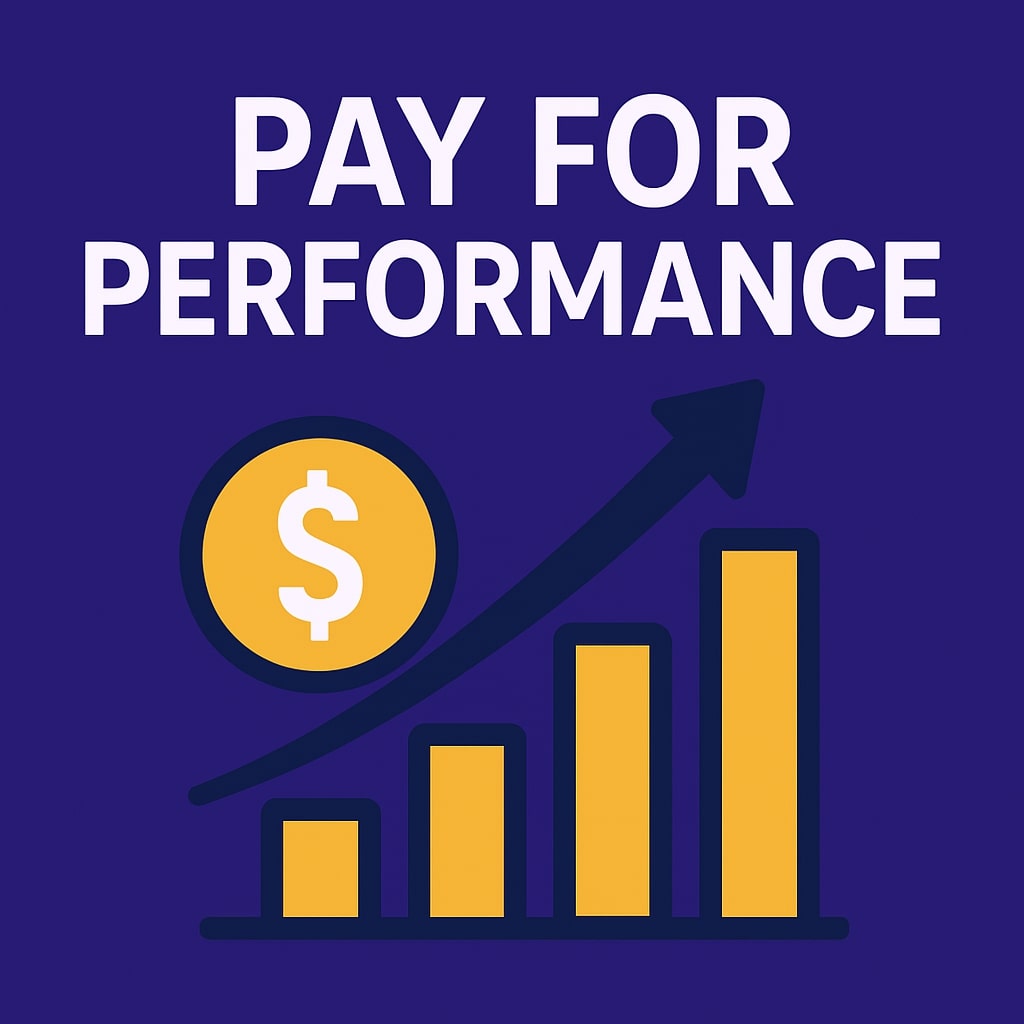What is Pay for Performance?
Pay for performance is a compensation model where an employee’s earnings are directly tied to their work outcomes or achievements. Unlike traditional pay structures that rely on fixed salaries or hourly wages, this system incentivizes employees by rewarding their contributions to the organization’s success.
The approach can take various forms, such as bonuses, raises, profit-sharing, or other financial incentives. For example, a salesperson might earn a commission based on the number of deals closed, while a software developer could receive a bonus for delivering a project ahead of schedule. The core idea is to align individual performance with broader organizational goals, driving both personal and company growth. Developing a robust system to manage and measure performance is a key foundation for this model, as highlighted in strategies for building effective performance management frameworks.
How Does Pay for Performance Work?
At its core, pay for performance connects compensation to measurable results. It ensures that employees’ efforts are recognized and rewarded in tangible ways, encouraging them to exceed expectations.
For instance, in sales teams, performance pay often means commissions or tiered bonuses tied to revenue goals. In healthcare, practitioners might receive incentives for meeting patient care quality metrics. These systems rely on clear, predefined objectives and key performance indicators (KPIs) to ensure fairness and consistency.
Organizations can tailor the system to suit different roles, teams, and industries. The flexibility of pay for performance allows it to be applied in creative ways, making it a widely adopted model in various sectors. However, challenges in managing underperformance may arise if clear guidelines, like those detailed in an employee written warning process, aren’t established.
Benefits of Pay for Performance
- Increases Motivation and Engagement
Employees are more likely to stay motivated when their efforts are rewarded directly. A clear link between performance and pay fosters a sense of ownership and accountability. - Drives Organizational Efficiency
By focusing on measurable goals, this system eliminates inefficiencies and directs employee efforts toward activities that align with business objectives. - Enhances Transparency
Clear metrics for success and open communication about expectations create a culture of fairness, making employees feel valued and respected. - Customizable for Different Roles
The system can be designed to suit diverse industries and positions, ensuring it meets the unique needs of the workforce and organization.
Challenges and Potential Drawbacks
- Difficulty in Defining Metrics
Not all roles have easily measurable outcomes, which can make it challenging to establish fair performance indicators. - Risk of Employee Burnout
Placing too much emphasis on performance can lead to stress and unhealthy competition, potentially harming morale and teamwork. - Implementation Complexities
Designing and rolling out an effective pay-for-performance system requires time, effort, and ongoing adjustments to address unforeseen issues. - Limited Applicability
Certain roles, particularly those focusing on creative or collaborative efforts, may not be well-suited to this model. To address performance issues effectively, organizations often benefit from structured approaches like implementing a Performance Improvement Plan, which offers a clear roadmap for achieving desired outcomes.
4 Steps to Successfully Implement Pay for Performance
- Define Clear Objectives and KPIs
Ensure that performance metrics are specific, measurable, and aligned with organizational goals. This clarity helps prevent misunderstandings and disputes. - Communicate Transparently with Employees
Employees should understand how the system works, what is expected of them, and how their performance will be evaluated and rewarded. - Train Managers and Leaders
Supervisors need the skills and tools to assess performance fairly and provide constructive feedback to employees. - Monitor and Refine Regularly
Regular evaluation of the system helps identify areas for improvement and ensures that it continues to meet organizational and employee needs.
Case Studies and Statistics
Implementing pay-for-performance systems has led to notable improvements in productivity and employee engagement across various organizations. For instance, a study by Edward P. Lazear analyzed the impact of performance-based pay at the Safelite Glass Corporation. The findings revealed a 44% increase in productivity after transitioning from hourly wages to piece-rate pay, with approximately half of this gain attributed to worker selection effects.
In another example, General Motors (GM) introduced a new performance evaluation system to incentivize high-performing salaried employees in the U.S. The system features a five-scale ranking structure, including “significantly exceeds expectations” and “does not meet expectations.” Top 5% performers receive a 150% bonus, while those failing to meet expectations may face termination. This change aims to attract and retain talented individuals critical to GM’s electric vehicle transformation.
These cases illustrate how well-structured pay-for-performance models can effectively enhance productivity and reduce turnover by aligning employee incentives with organizational goals.
Conclusion
Pay for performance is a powerful tool for organizations seeking to align employee efforts with business goals. By providing clear incentives for high performance, companies can foster a motivated, engaged, and efficient workforce. However, it’s not a one-size-fits-all solution and requires careful planning, clear metrics, and ongoing evaluation to succeed.
For companies willing to invest the time and resources into creating a robust pay-for-performance model, the potential rewards are significant. When done right, this system can drive both employee satisfaction and organizational growth.
FAQs
- Does pay for performance work in remote teams?
Yes, as long as clear objectives are established and regular check-ins are conducted to assess progress and provide feedback. - How can companies avoid common pitfalls?
Focus on transparency, regular communication, and fairness in setting and measuring performance metrics. Continuous feedback and system adjustments are crucial.
If you’re considering implementing a pay-for-performance model, ensure your organization has the right tools in place to support both underperformance challenges and growth, such as leveraging structured approaches like performance improvement plans. When implemented thoughtfully, this system can become a catalyst for employee and organizational success.

